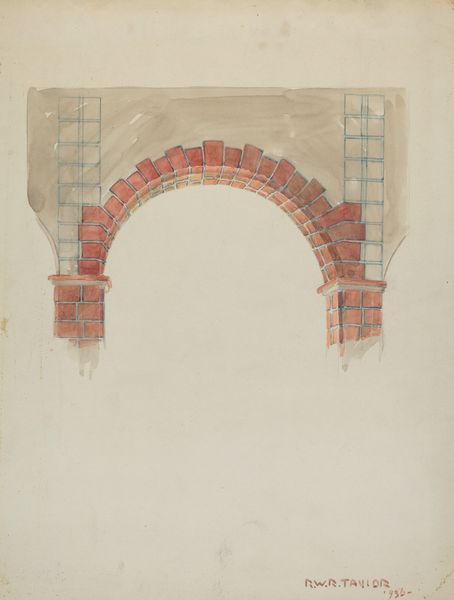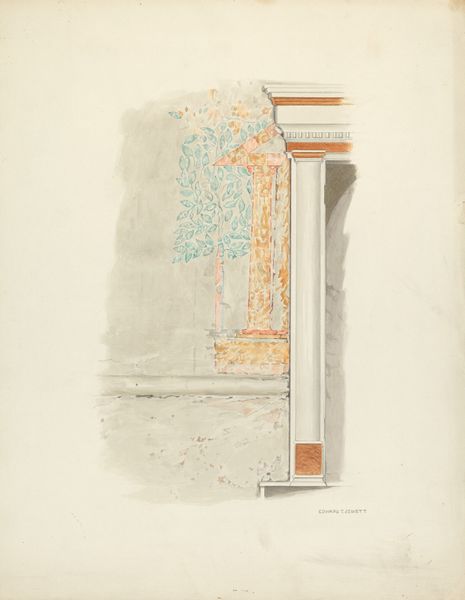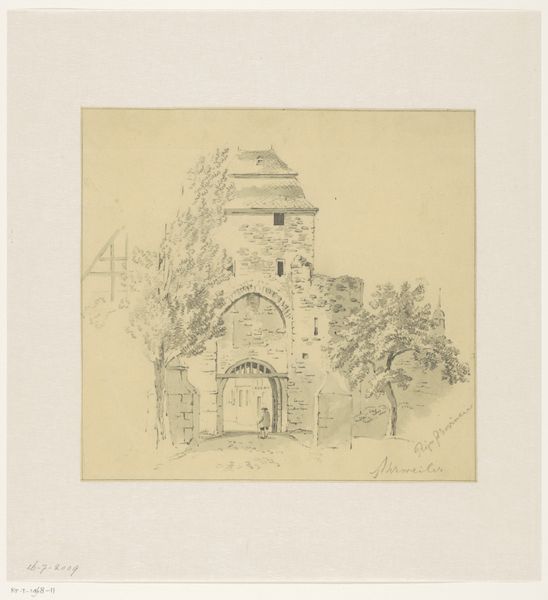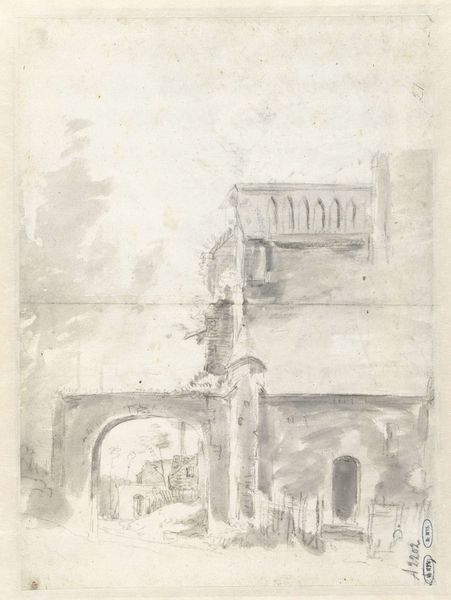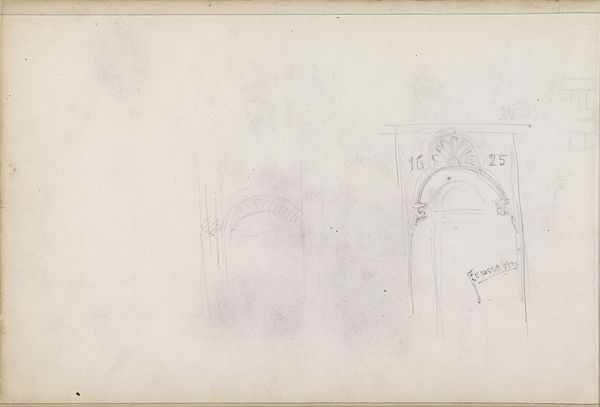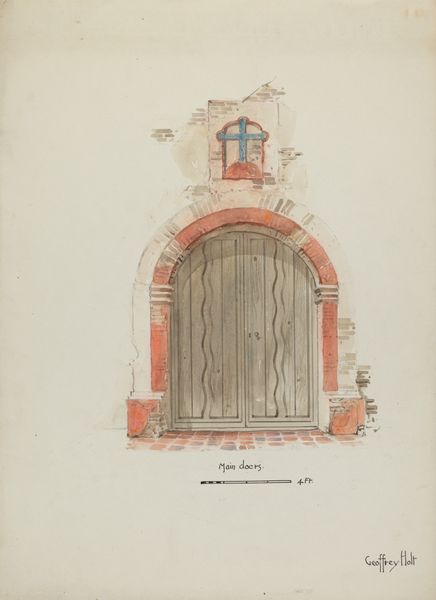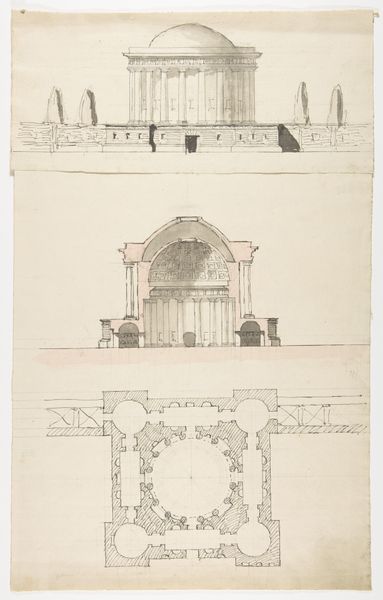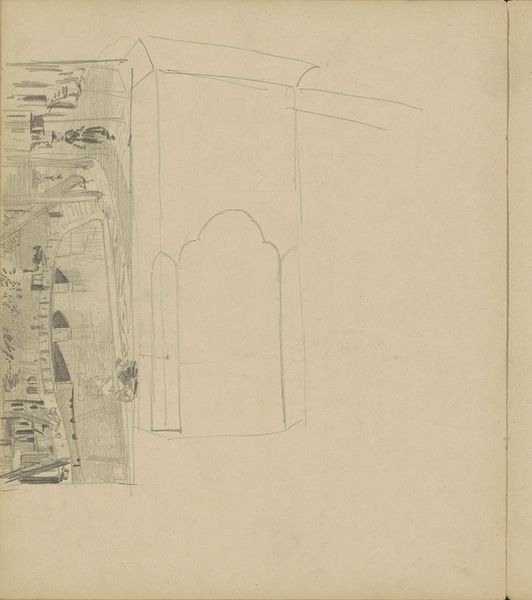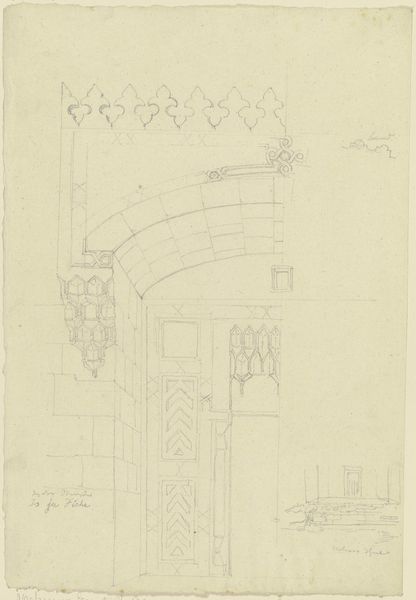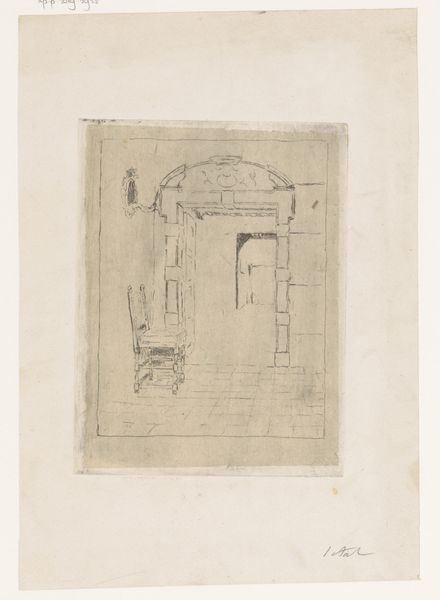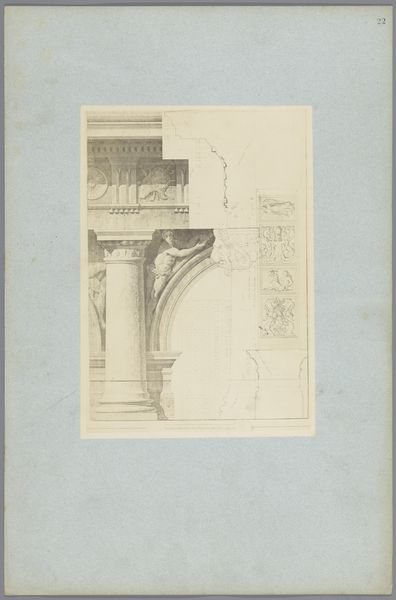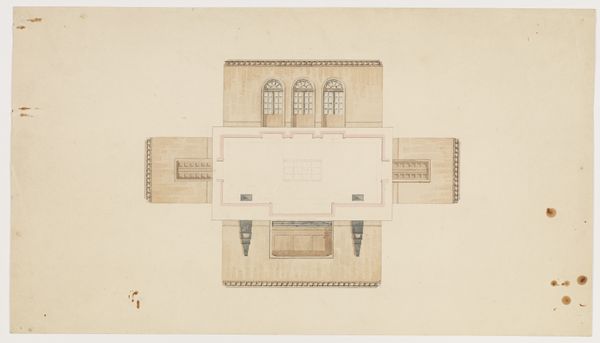
Restoration Drawing: Main Doorway and Arch toMission House 1936
0:00
0:00
drawing, plein-air, watercolor
#
drawing
#
water colours
#
plein-air
#
watercolor
#
coloured pencil
#
watercolor
Dimensions: overall: 35.6 x 27.9 cm (14 x 11 in.) Original IAD Object: Height, base of pilasters-top of arch: 7'5"
Copyright: National Gallery of Art: CC0 1.0
Curator: This is Robert W.R. Taylor’s "Restoration Drawing: Main Doorway and Arch to Mission House," created in 1936 using watercolors. What’s your immediate reaction? Editor: It's evocative; the gentle wash of colors gives it a wistful, almost ethereal quality, wouldn’t you agree? There’s a beautiful balance in the composition as well, what appears to be architectural stability conveyed in very light hues. Curator: I think that’s a perceptive point, given that the medium chosen is watercolors. This drawing transcends a simple representation, serving instead as a window into the past and prompting an investigation into cultural preservation. Taylor’s piece is not merely art, it's an act of recording, and remembrance. Editor: Precisely, how interesting that you focus on the aspect of the architectural record, but look closely at the brushstrokes, especially around the archway. It reveals a dialogue between rigidity, as it gives form to brickwork, and fluidity as the lines give way and bleed together to portray structure— Curator: Do you believe the architectural features might act as metaphors? The doorway, specifically, and what could be behind it? Editor: The architectural framework definitely imposes meaning here. I wonder what the space has been historically, socially, or functionally? For the bricks to be in decay like that, is it evidence of social changes or is the history tied to something else altogether? Curator: Well, by naming the piece "Restoration Drawing", I do wonder what other work had gone into preserving that mission beforehand. Editor: The way the colors render its light and shade is exquisite. Even in its current state of disrepair it makes you curious to explore what lies behind it. A silent narrative woven into watercolor. Curator: So, looking at it that way we might view it both as historical documentation and poetic observation. Editor: Exactly. Art reflecting preservation and conservation efforts but told through color, stroke, form, and structure to really push those themes of history into the minds of the viewer. Thank you for your time and perspective on this!
Comments
No comments
Be the first to comment and join the conversation on the ultimate creative platform.
